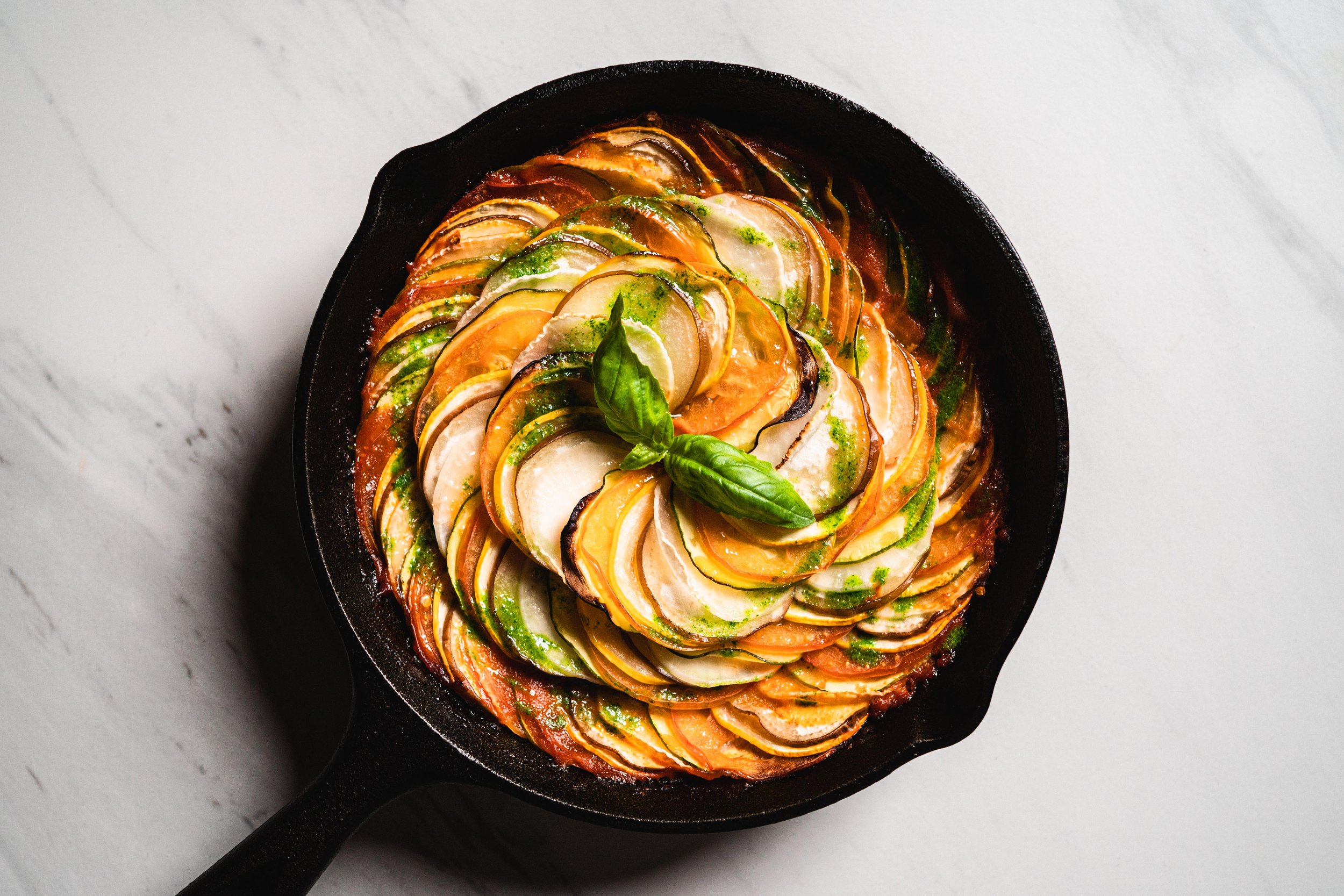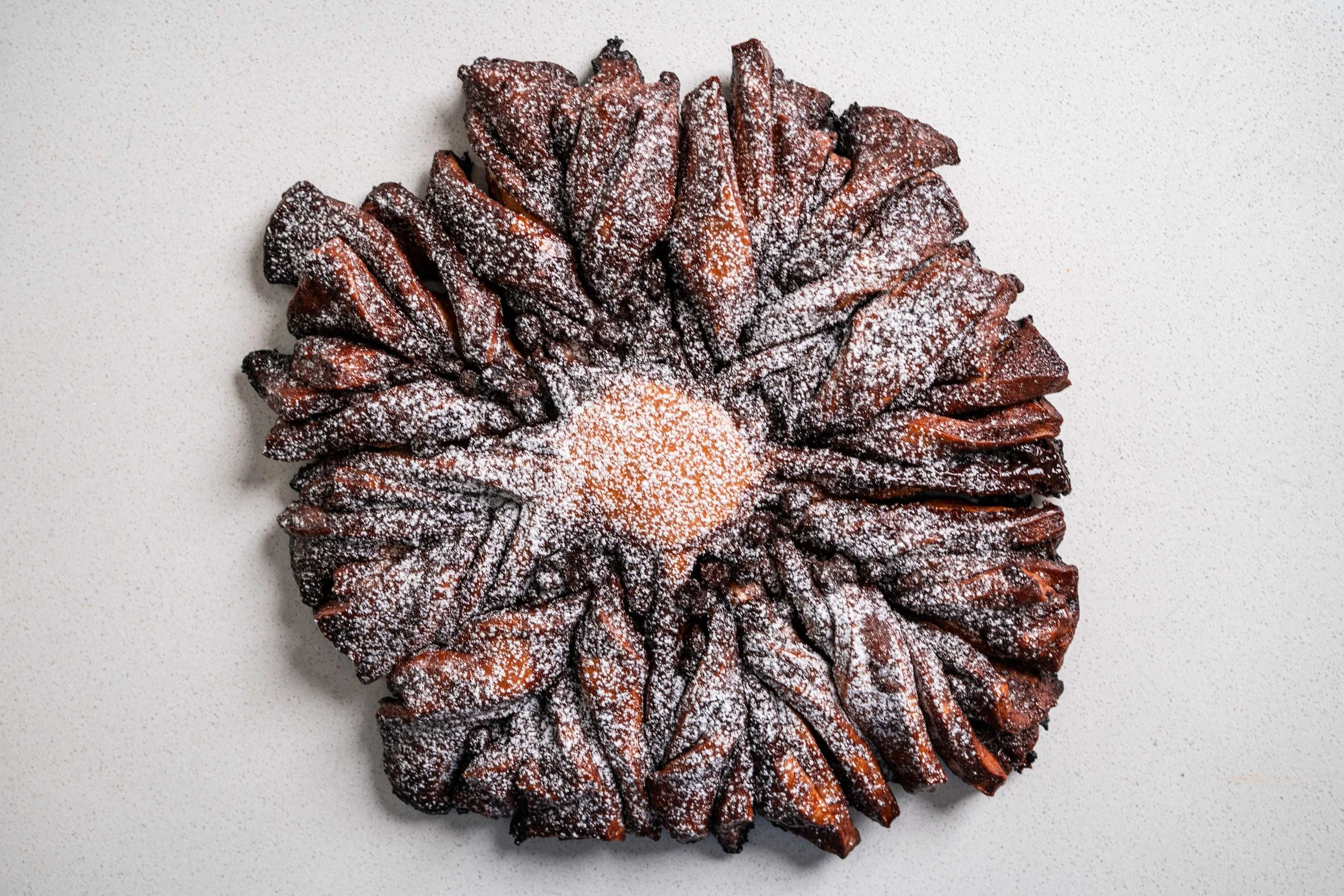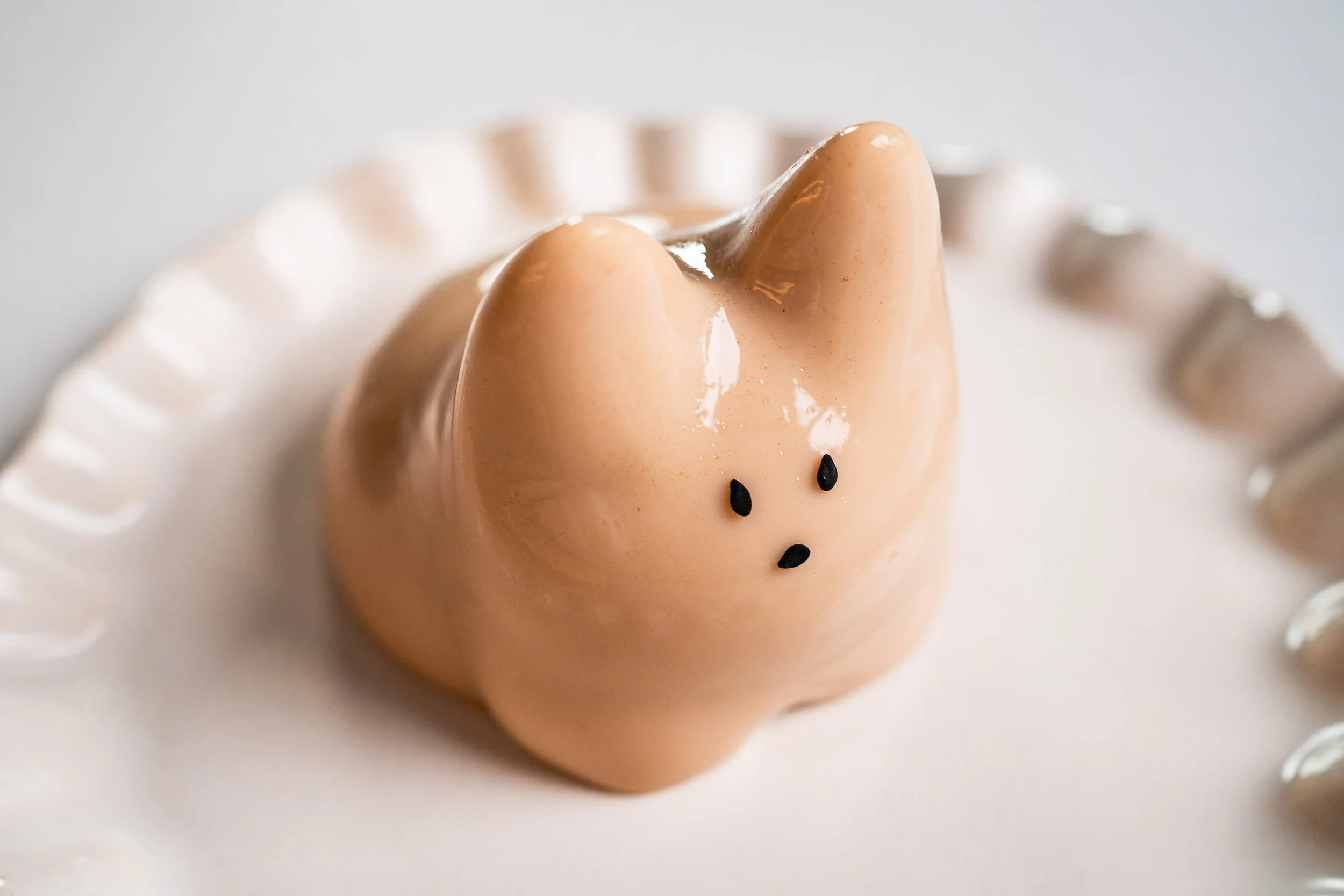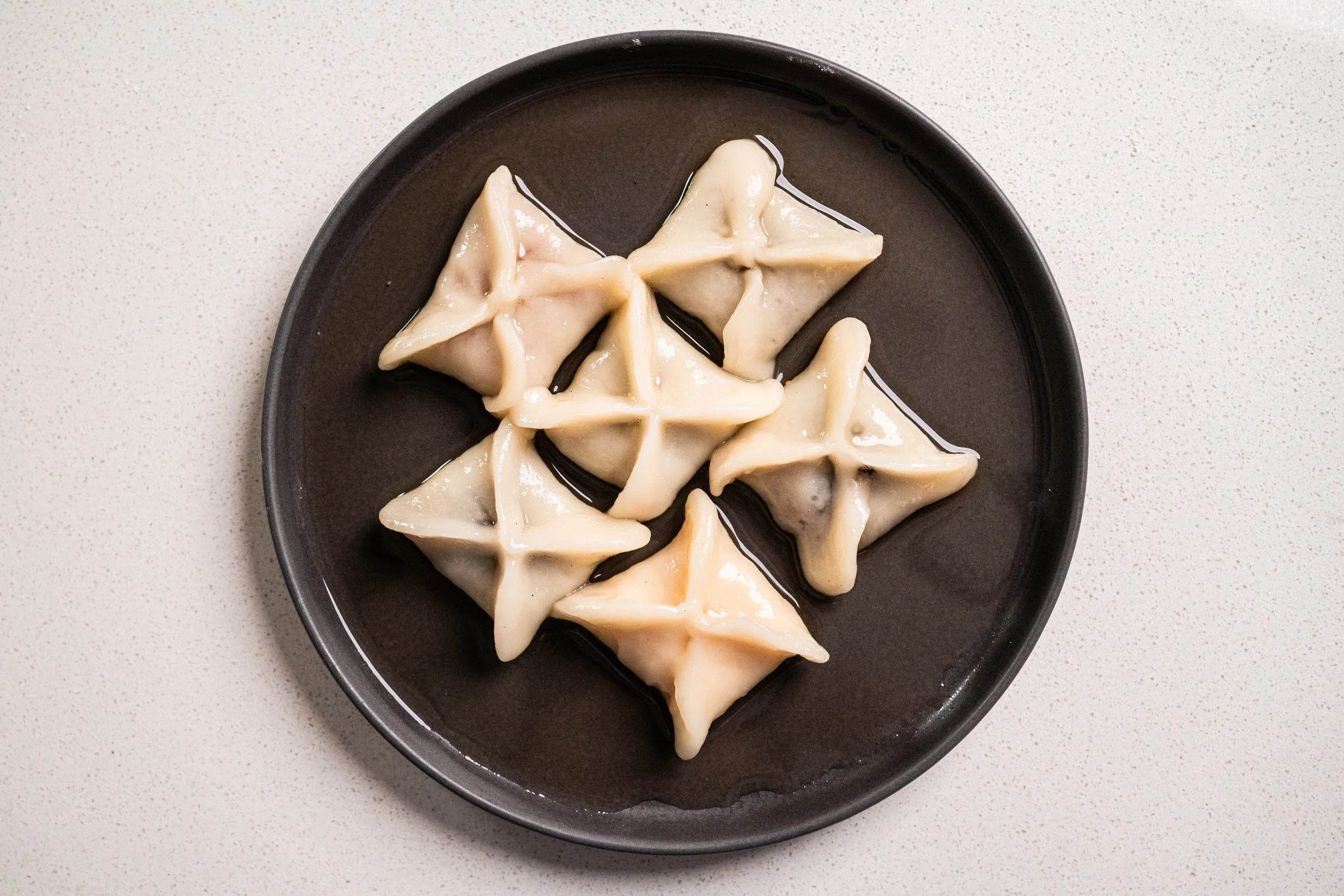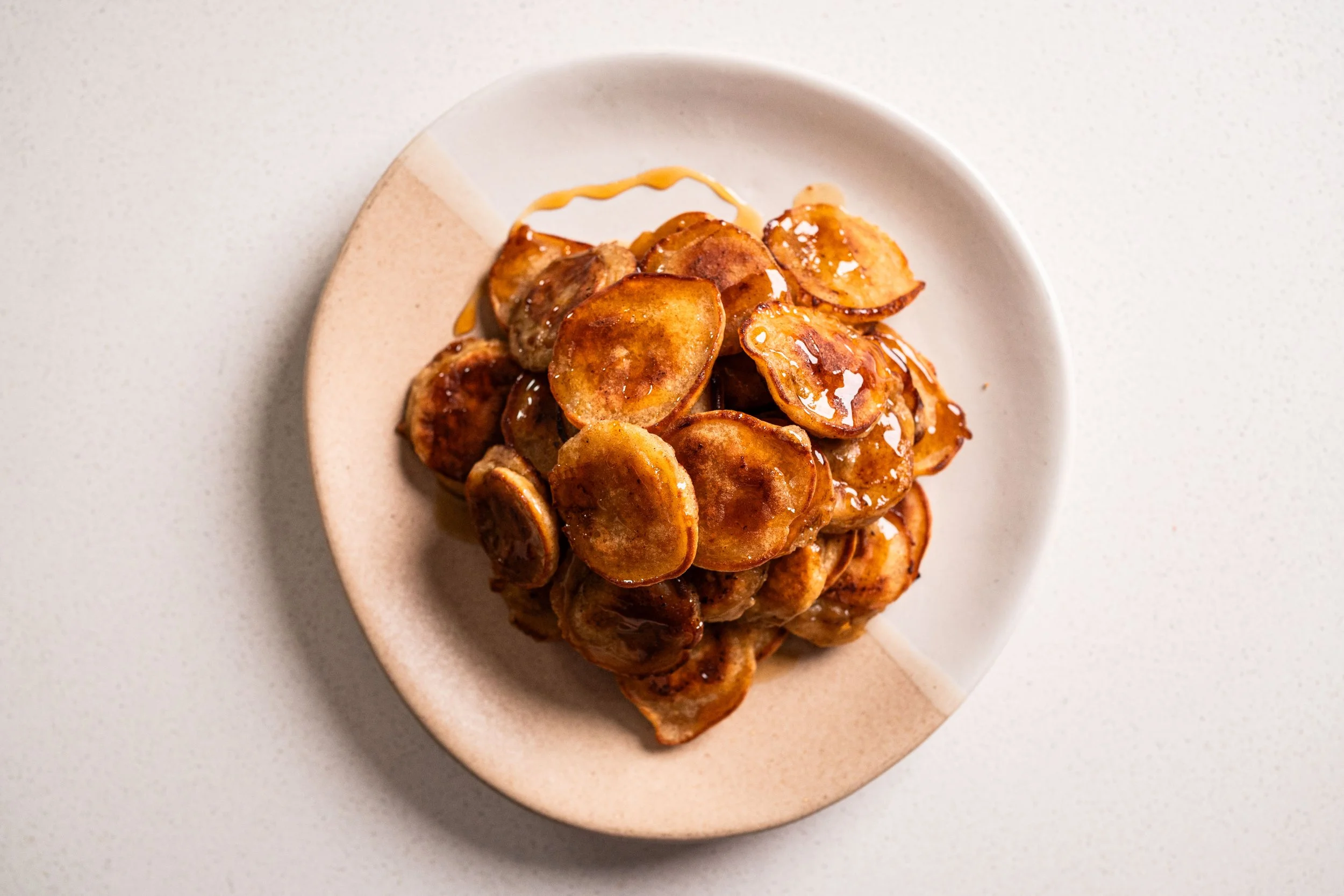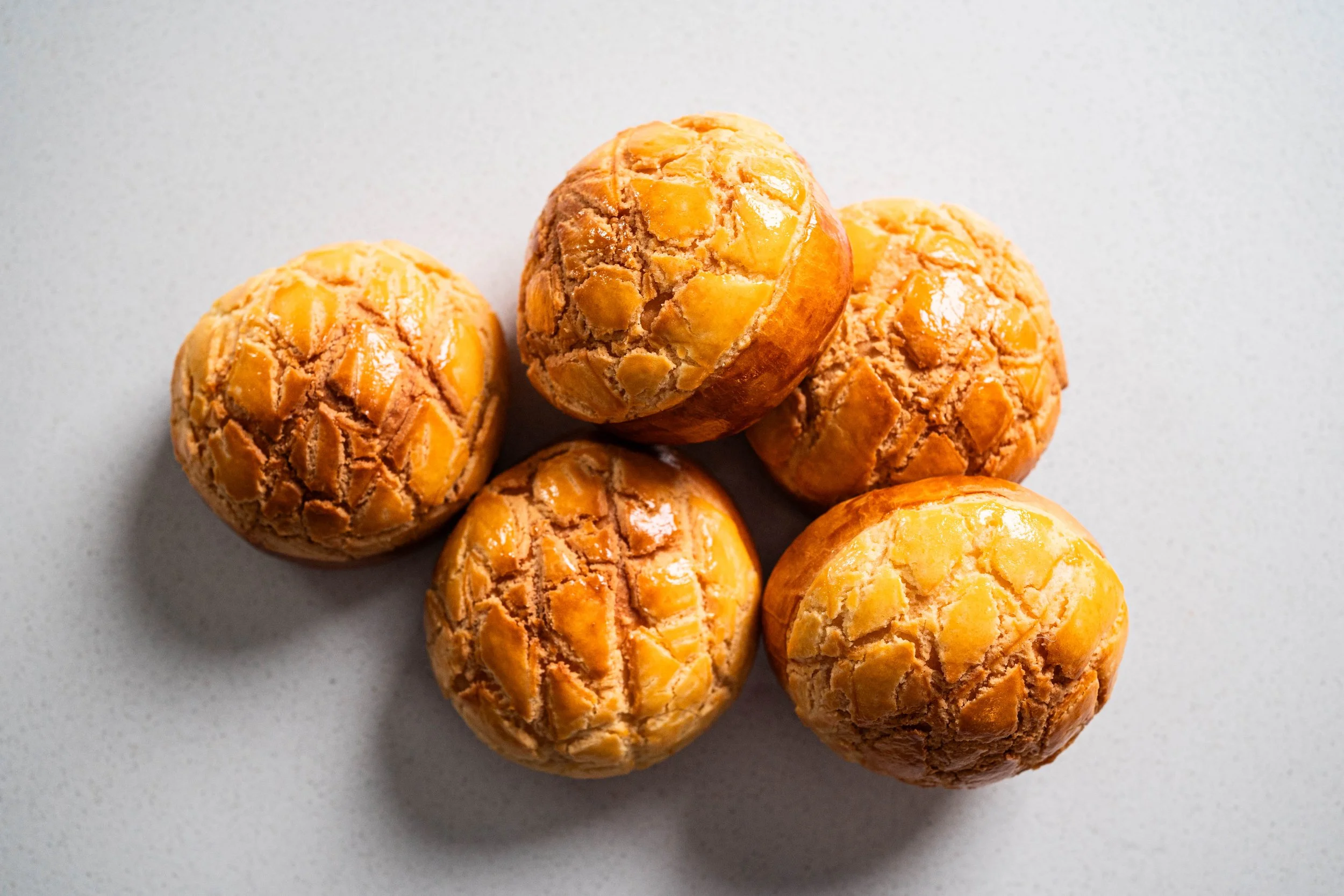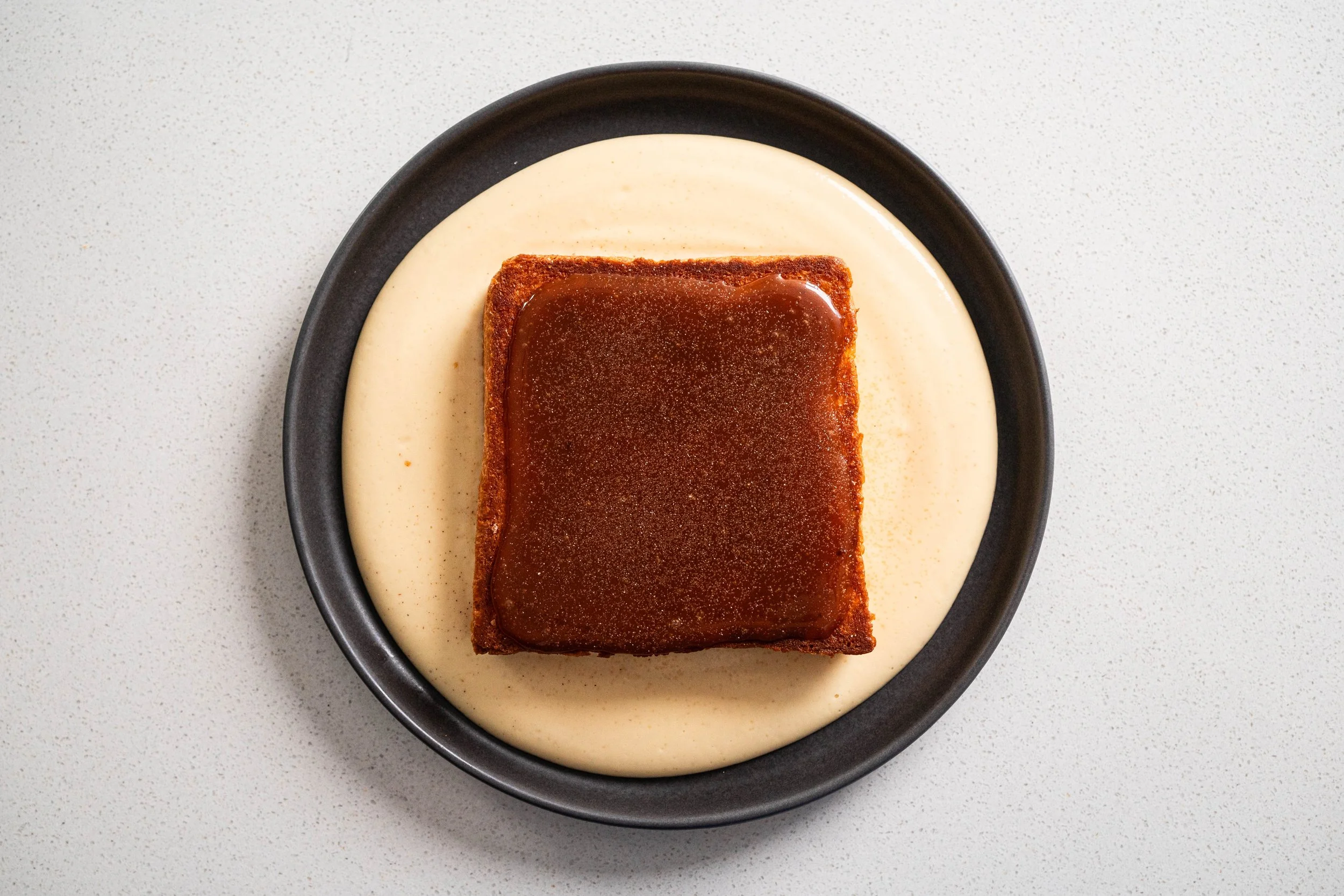Ratatouille
When conversations turn to my culinary background, it always throws people off a little when I mention that I’m trained in classical French cooking. It’s something I don’t bring up a lot, as I rarely make French dishes, or even draw inspiration from them.
But technically, I suppose I am proficient in the traditional techniques of this mother cuisine (#humblebrag), especially seeing as a lot of our modern cooking methods do originate from the French way of cooking anyway.
But today, as an homage to my culinary background (and to indirectly flaunt my French cooking tekkers), I set out to make a classy, classic Provençal dish—ratatouille!
About the Dish
This dish is 90% of a classic bougie ratatouille. Classic because it takes the traditional flavours and cooking method of a ratatouille—vegetables stewed in a tomato-based vegetable sauce—and bougie because it’s made to look extra pretty by shingling the vegetable slices (like Remy did in the Ratatouille movie), as opposed to the more rustic style of rough-chunking the vegetables.
The 10% where this ratatouille detracts from the usual is in the addition of gochujang into the sauce—yes, I admit I’ve been quite reliant on gochujang (and miso) in much of my cooking these days 😂, but it’s just so versatile and adds so much body and depth—and the choice of vegetables I used.
Because on top of the usual line-up of ratatouille vegetables like eggplants, zucchinis, and tomatoes, I added in two Asian vegetables!
The first is daikon radish, a workhorse of many Asian cuisines, that will add a bit of earthiness as well as a bite-y texture to the layer of shingled vegetables.
And the second is Korean aehobak (애호박), a traditional Korean squash that is used in many seasonal Korean dishes. Also called Korean zucchini, or Korean incubator pumpkin (by K Fresh, where I got mine from), this squash has a subtly sweet, almost floral flavour, and a compact cell structure that is somehow both denser and more tender than most zucchinis or courgettes. It’s a squash that can be eaten raw, but also holds up very well in cooking. As such, it’s used in a variety of Korean dishes, from slicing and quick-pickling them in banchans, to stir-frying them with shrimp, stuffing them, to slicing them into strips and mixing them in a batter then pan-fried into hobakjeon (squash pancake). (If you’re in Malaysia, these can be hard to find, but you can order them online from K Fresh online!)
So, as an homage to my French culinary training, and to satisfy my constant urge to bridge the many cuisines of the East and West (generic geographical terms, I know), I bring you… an Asian-ish/Korean-ish ratatouille!
Tips for Success
To make what might be the prettiest dish you’ve made (it certainly was one of mine), here are some tips:
Slicing the vegetables: The bulk of the prep work for this recipe is in the slicing of the vegetables. It’s crucial that you slice the vegetables thinly so they almost melt into each other during the baking process. I find that 3mm is the sweet spot, but anywhere from 3-5mm is good. These are quite fine slices to cut evenly with a knife, so for more consistency, feel free to use a mandolin if you have one.
Baking: The ratatouille is first baked in a pan with a piece of foil covering it, before going through a second bake with the foil removed and the top bared. The first serves to cook the vegetables and almost steam it in its own juices. Then, when the vegetables are cooked, the second bake will evaporate the excess moisture in the vegetables and sauce, concentrating the flavour of the whole dish. Both bakes are equally important, so don’t skimp on the bake time for both!
Basil oil: A good basil oil has a vibrant green colour to it. To get this, the key is to blanch the basil leaves, and then immediately shock it in freezing cold ice water to stop the cooking and “lock in” the chlorophyllic colour. Then, as you pulverise it in the blender with oil, make sure not to blend it for too long as the heat from the blender blades will muddle the colour of the basil oil if it gets too hot.
The recipe below is sponsored by K Fresh by First Pick, a brand bringing premium air-flown Korean fresh produce to Malaysia.
Ratatouille
Makes one 24cm ratatouille
Ingredients
1/2 Korean incubator pumpkin (also called Korean zucchini or aehobak; I got mine from K Fresh)
1/2 eggplant
1/2 yellow zucchini
1/2 daikon radish
2 Roma tomatoes, or regular red tomatoes
Sauce
30ml (2 tbsp) vegetable oil
1 white onion, diced
1 red pepper, diced
3 garlic cloves, minced
8g (1/2 tbsp) Dijon mustard
8g (1/2 tbsp) gochujang
240g (1 cup) tomato puree
5g (1 tsp) salt
1g (1/2 tsp) black pepper
Basil oil (makes more than you need for the ratatouille)
15-20 basil leaves
3g (1/2 tsp) salt
100ml (1/2 cup) vegetable oil, or any other neutral oil
1 sprig fresh basil, for garnishing
Directions
Slice vegetables: Start by slicing the aehobak, eggplant, yellow zucchini, daikon radish, and tomatoes super thin (about 3-5mm), either with a sharp knife or a mandolin.
Make sauce: Pour the vegetable oil into a pan, and place it over medium heat. Add the diced onions and red peppers, and saute for 2-3 minutes, until the onions are slightly translucent, making sure not to burn them. Add in the minced garlic, and saute for a further 2 minutes. Add in the mustard, gochujang, tomato puree, salt, and pepper, and bring the whole mixture to a simmer, and cook for 3-5 minutes to let the flavours familiarise with each other. Take the sauce off the heat, let it cool for 5 minutes, then pour it into a blender. Blend on high until a smooth puree forms. (This took about 20 seconds for me, but might be longer depending on your blender.)
Preheat oven: Heat your oven up to 180°C.
Assemble ratatouille: The ratatouille is best made in a Dutch oven or cast iron pan (or an oven-proof pan). Pour the sauce into the pan and spread it out with a spoon so the bottom of the pan is evenly covered in sauce. Then, shingle the sliced vegetables on top, in 3-4 concentric circles, to get a nice pattern to your ratatouille. (This is admittedly purely for aesthetics. You can also just spread the vegetables on top in a haphazard manner without any distinct patterns, and it’ll turn out just as tasty!)
Bake ratatouille: Cover the top of the pan with aluminium foil, and bake the ratatouille for 30 minutes. Then, remove the foil from the pan, and bake for a further 30 minutes to concentrate the flavour of the vegetables.
Make basil oil: While the ratatouille is baking, ready a small pot of boiling water. Blanch the basil leaves in the water for 20 seconds, then immediately sift out the leaves and drop them into a bowl of ice water to stop the cooking. Then, take out the leaves, give it a hard squeeze to remove the excess liquid, and put them in a blender together with the salt and oil. Blend for 20-30 seconds until the basil leaves are completely pulverised and the oil is a brilliant shade of green. Transfer the oil into a bowl or bottle. (You’ll have more basil oil than you need for the ratatouille, but you can save the excess to use as a vibrant garnish for many vegetable-forward dishes, or even to lend herbaceousness to meat dishes!)
Garnish, serve, and eat: When the ratatouille is done, take it out of the oven, drizzle 2-3 teaspoons of basil oil on top, and garnish with a sprig of fresh basil in the middle. Serve and eat it immediately for the best flavour!

